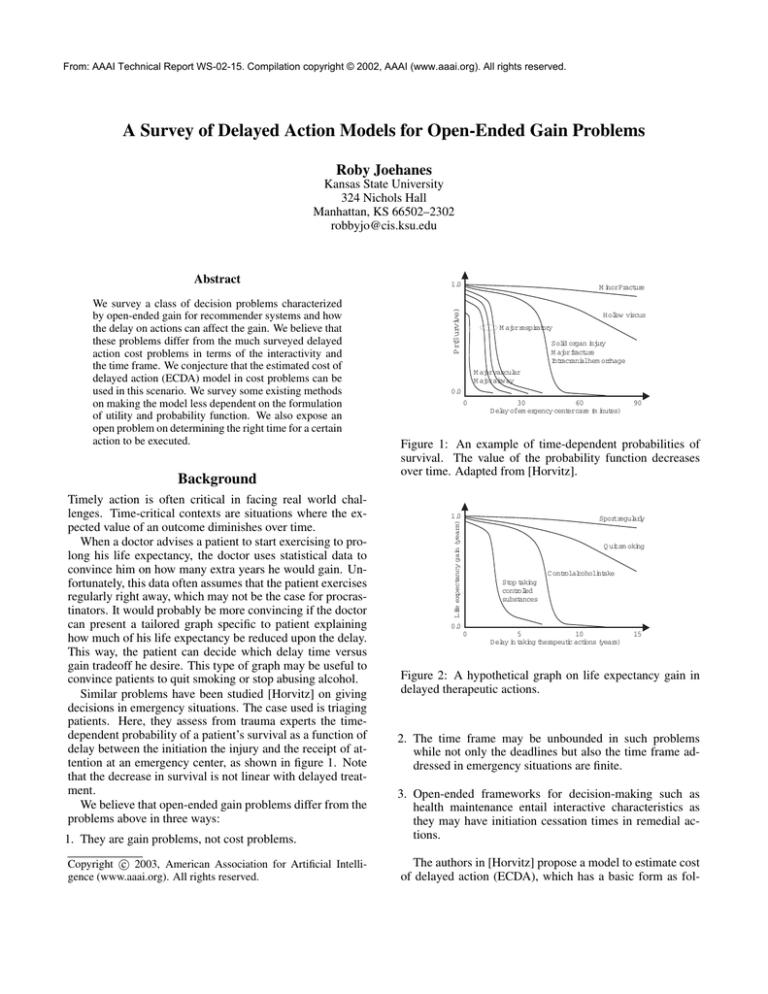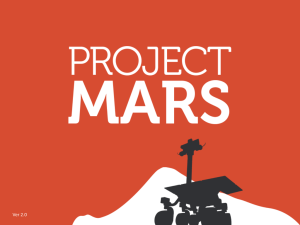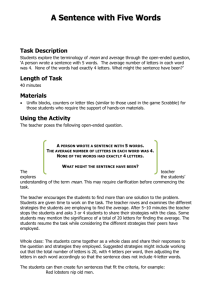
From: AAAI Technical Report WS-02-15. Compilation copyright © 2002, AAAI (www.aaai.org). All rights reserved.
A Survey of Delayed Action Models for Open-Ended Gain Problems
Roby Joehanes
Kansas State University
324 Nichols Hall
Manhattan, KS 66502–2302
robbyjo@cis.ksu.edu
Background
Timely action is often critical in facing real world challenges. Time-critical contexts are situations where the expected value of an outcome diminishes over time.
When a doctor advises a patient to start exercising to prolong his life expectancy, the doctor uses statistical data to
convince him on how many extra years he would gain. Unfortunately, this data often assumes that the patient exercises
regularly right away, which may not be the case for procrastinators. It would probably be more convincing if the doctor
can present a tailored graph specific to patient explaining
how much of his life expectancy be reduced upon the delay.
This way, the patient can decide which delay time versus
gain tradeoff he desire. This type of graph may be useful to
convince patients to quit smoking or stop abusing alcohol.
Similar problems have been studied [Horvitz] on giving
decisions in emergency situations. The case used is triaging
patients. Here, they assess from trauma experts the timedependent probability of a patient’s survival as a function of
delay between the initiation the injury and the receipt of attention at an emergency center, as shown in figure 1. Note
that the decrease in survival is not linear with delayed treatment.
We believe that open-ended gain problems differ from the
problems above in three ways:
M inorFracture
Pr(Survive)
We survey a class of decision problems characterized
by open-ended gain for recommender systems and how
the delay on actions can affect the gain. We believe that
these problems differ from the much surveyed delayed
action cost problems in terms of the interactivity and
the time frame. We conjecture that the estimated cost of
delayed action (ECDA) model in cost problems can be
used in this scenario. We survey some existing methods
on making the model less dependent on the formulation
of utility and probability function. We also expose an
open problem on determining the right time for a certain
action to be executed.
1.0
H ollow viscus
M ajorrespiratory
Solid organ injury
M ajorfracture
Intracranialhem orrhage
M ajorvascular
M ajorairw ay
0.0
0
30
60
D elay ofem ergency centercare (m inutes)
90
Figure 1: An example of time-dependent probabilities of
survival. The value of the probability function decreases
over time. Adapted from [Horvitz].
1.0
Sportregularly
Life expectancy gain (years)
Abstract
Q uitsm oking
C ontrolalcoholintake
Stop taking
controlled
substances
0.0
0
5
10
D elay in taking therapeutic actions (years)
15
Figure 2: A hypothetical graph on life expectancy gain in
delayed therapeutic actions.
2. The time frame may be unbounded in such problems
while not only the deadlines but also the time frame addressed in emergency situations are finite.
1. They are gain problems, not cost problems.
3. Open-ended frameworks for decision-making such as
health maintenance entail interactive characteristics as
they may have initiation cessation times in remedial actions.
c 2003, American Association for Artificial IntelliCopyright gence (www.aaai.org). All rights reserved.
The authors in [Horvitz] propose a model to estimate cost
of delayed action (ECDA), which has a basic form as fol-
lows:
ECDA = max
A
max
A
Future Work
u(Ai , Hj , t0 )p(Hj |E, ξ) −
j
u(Ai , Hj , t)p(Hj |E, ξ)
(1)
j
Interestingly, although the model is called a ”cost” model,
the graph plotted in figure 1 can be considered a gain graph
over a period of time if we reckon the remaining survival
probability as a gain. Intuitively, the ECDA formulation is
the utility difference if we take an action now instead of at
time t. If we consider the gain to be diminishing, i.e. gain
by doing the action now is greater than doing it later, then
this formulation also fits for our problems.
Although the time frame of the emergency situations is
limited, the formulation of the model is not a limiting restriction. Therefore, this model can be used to address openended situations. In order to stop plotting the decision graph
for the recommender system, we can impose a limit on the
time frame (t0 ≤ t ≤ tk , for a reasonable k) or we can stop
if the gain is small enough. Alternatively, we can apply a
discounting factor to enforce the diminishing outcomes.
We also consider other metrics such as Quality Adjusted
Life Year (QALY) and micromort, which are widely used in
medical and safety analysis. QALY measures the average
health during one year on a 0 to 1 scale. A year in perfect
health is considered equal to 1.0 QALY. The value of a year
in ill health would be discounted. A micromort denotes one
of a million chance of death.
Open Questions
The ECDA model depends highly upon the formulation of
the utility and the probability functions. However, this is
typically unavoidable as these are often domain dependent.
For some problems where these formulations are not wellestablished, such as the health care problem we present earlier, we can apply several approaches:
1. We can learn the function from the available recorded
cases.
2. Use some form of discounted version of the utility function if we know that the gain is diminishing.
3. If the function is sparsely defined, we can smooth out the
function.
Which of the three is best in certain domains is an application dependent issue.
Although the ECDA model is good at estimating the cost
of delayed action, it does not address the interval during
which the action should be carried out. We can claim that
the appropriate time t to carry a certain action A is the one
that has the lowest ECDA (or the highest, if it is a gain problem). However, doing so requires computationally expensive scheduling and dynamic planning or replaning step. To
make matters worse, we must proliferate the state parameter
Hj to consider all possibilities. This can be overcome by
restricting the time frame and time granularity, limiting the
set of actions and abstracting the states. How to do these the
right way is the topic of our intended research.
We intend to test our conjectures and conduct empirical
studies on how ECDA model could fit the gain model on
open-ended framework.
We also try to investigate which abstraction is best applied for gain problems and modify the model formula if
necessary. We will try each of these models as the utility in
decision making using reinforcement learning framework.
We will try to generalize the solution to other open-ended
gain problems that may exhibit agent immortality.
Acknowledgements
We would like to thank Dr. William Hsu for all of his patience and guidance.
References
Horvitz, Eric and Seiver, Adam. Time-Critical Action: Representations and Application, Proceedings of the Thirteenth
Conference on Uncertainty in Artificial Intelligence, August
1997.
Howard, R. A. Microrisks for Medical Decision Analysis,
International Journal of Technology Assessment in Health
Care, 5:357-370.
Kaelbling, L. P.; Littman, M. L.; and Moore, A. W. Reinforcement Learning: A Survey, Journal of Artificial Intelligence Research 4, 1996.
Norvig, Stuart and Russell, Peter. Artificial Intelligence A
Modern Approach, Prentice-Hall, Inc., 1995.
Resnick, Paul and Varian, Hal. Recommender Systems,
Introduction to special section of Communications of the
ACM, March 1997, vol. 40(3).
Van Praag, B. M. S.; Ferrer-i-Carbonell, A. AgeDifferentiated QALY Losses, IZA Discussion Papers, Institute for the Study of Labor (IZA), 2001, no. 314.






